US Air Ambulance Near Miss with Zip Wire and High ROD Impact at High Density Altitude (Trans Aero MedEvac HEMS Airbus AS350B2 N894NA)
On 29 September 2018 Airbus Helicopters AS350B2 air ambulance N894NA of Trans Aero (dba Trans Aero MedEvac) was damaged in a landing accident, caught spectacularly on video, at the Ski Apache ski resort in southern New Mexico, on the slopes of Sierra Blanca mountains. The pilot and two medical personnel on board were uninjured.
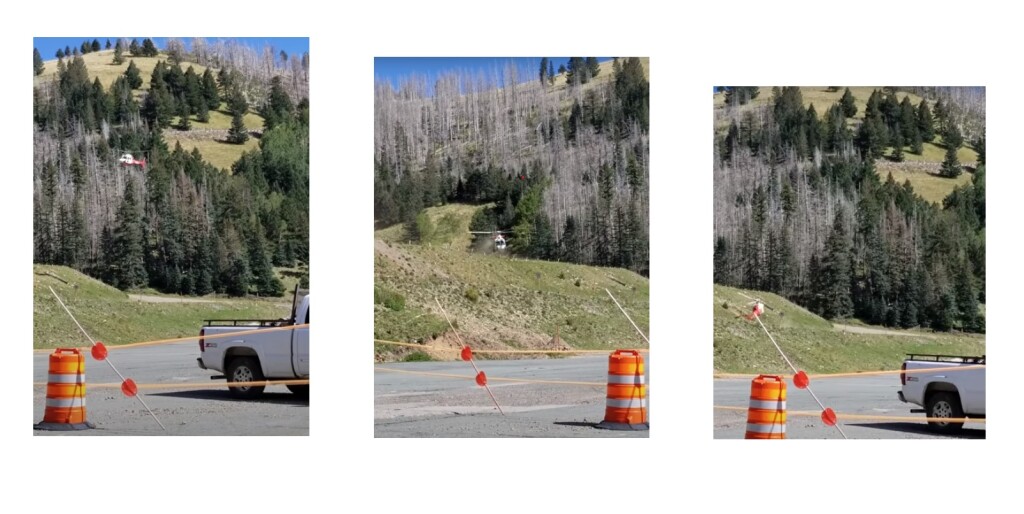
Stills from Video of Trans Aero Air Ambulance Airbus AS350B2 N894NA Accident at Ski Apache, near Ruidoso, New Mexico (Credit: Video Pete Hildebrand)
The Accident Flight
The US National Transportation Safety Board (NTSB) explain in their safety investigation report (issued in January 2021) that the aircraft was inbound to collect a patient at a landing site at 9,793 ft AMSL.
NTSB statements from the pilot and medical personnel onboard indicate they originally anticipated collecting the patent from Sierra Blanca Regional Airport (SRR), Ruidoso, New Mexico (a lower but still significant 6,814 ft AMSL). One of the medical personnel on board recount that:
Enroute, while going over the mountain, there was a quick discussion between the crew regarding the density altitude of the landing zone due to the high altitude. Also, the crew was trying to contact the Ski Apache ground personnel but they were not able to attain to reach them until there were in the area of the landing zone.
The pilot (aged 53, with 16,818 flying hours experience, 3526 on type)…
…decided to conduct an eastbound reconnaissance over the landing site to scan for obstacles. He saw two cables in front and below the helicopter ‘s flightpath and initiated a go-around.
It was only during this reconnaissance that they had made radio contract with the ground. These cables were in fact the ‘Palmer‘ zip wires at the resort.
The landing site appears to be less than 130 m from the cables. It is not clear if the zip wires were in use, although the resort’s procedures are to halt their use when a helicopter was called. A UAE SAR AW139 did crash on 29 Dec 2018 after a zip wire strike.
Oddly, part of the drill for preparing the landing site was to place thin orange tape on the ground under the zip wires in the hope this would be seen by the inbound pilot.
The NTSB don’t elaborate further on the near miss or the landing site but go on to say the pilot….
…added power to clear the cables, and once the tail cleared the cables, he lowered the collective due to a slight drop in the main rotor speed. As he continued the go-around, he initiated a 180º left turn to attempt an approach to the landing site.
The pilot stated wind was “5 knots and variable inside the valley. My approach was now slightly faster than normal”.
He was asked why he decided to turn the helicopter versus completing the go-around, he stated that he looked towards the east at their current heading and saw a trees that would not be ideal for an emergency landing site if they lost engine power. He could not further explain why he decided to turn the helicopter and in hind sight, he would have continued the go-around.
During the westward approach and while the helicopter was about 20 ft above ground level, he raised the collective to reduce the descent rate, and the main rotor speed subsequently decayed. He felt that, due to the “faster than normal” descent rate, he would not be able to cushion the landing.
Before touchdown, a medical crewmember spotted an elevated steel barrier cable below the helicopter, and the pilot made a 90º left turn to avoid a tail rotor strike.
The helicopter subsequently touched down hard, bounced, rotated about 180º counterclockwise over the barrier cable, slid down a [c 25 ft] embankment, and came to rest upright.
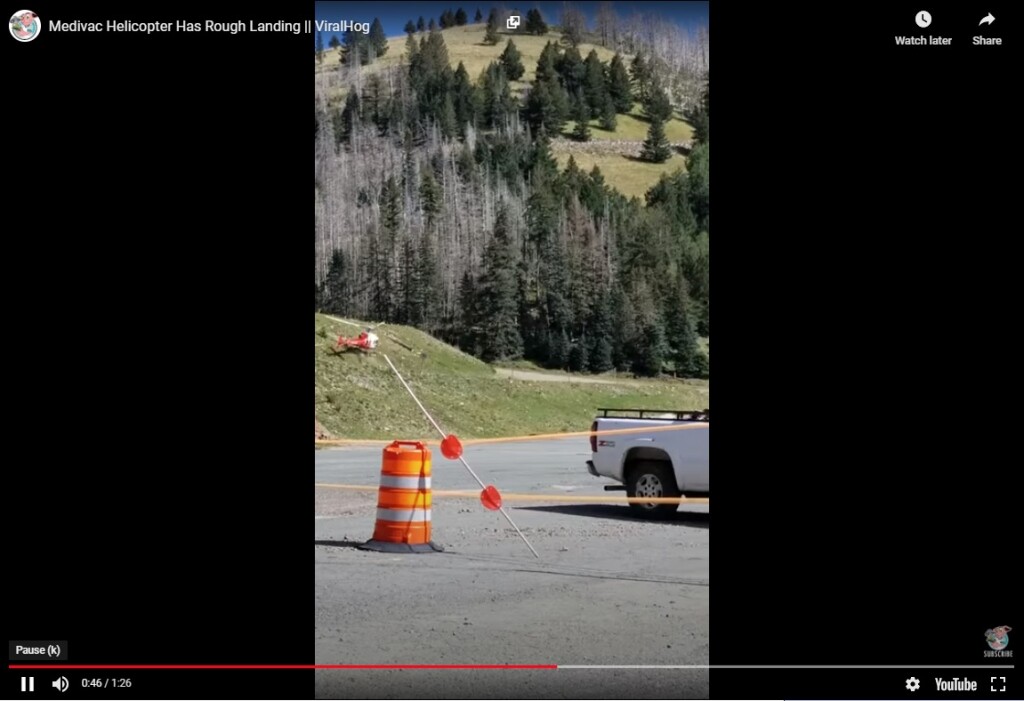
Video of Trans Aero Air Ambulance Airbus AS350B2 N894NA Accident at Ski Apache, near Ruidoso, New Mexico (Credit: Pete Hildebrand)
Oddly there is no indication that the NTSB actually reviewed this video, which was carried by local TV and social media within days.
The operator estimated the weight at the time was 4,871 lbs (2,209 kg) and reported the damage as…
Landing gear spread, dents on tail boom, lower vertical stabilizer bent, ground impact damage to one main rotor blade near tip. …there were no preaccident mechanical failures or malfunctions with the helicopter that would have precluded normal operation.
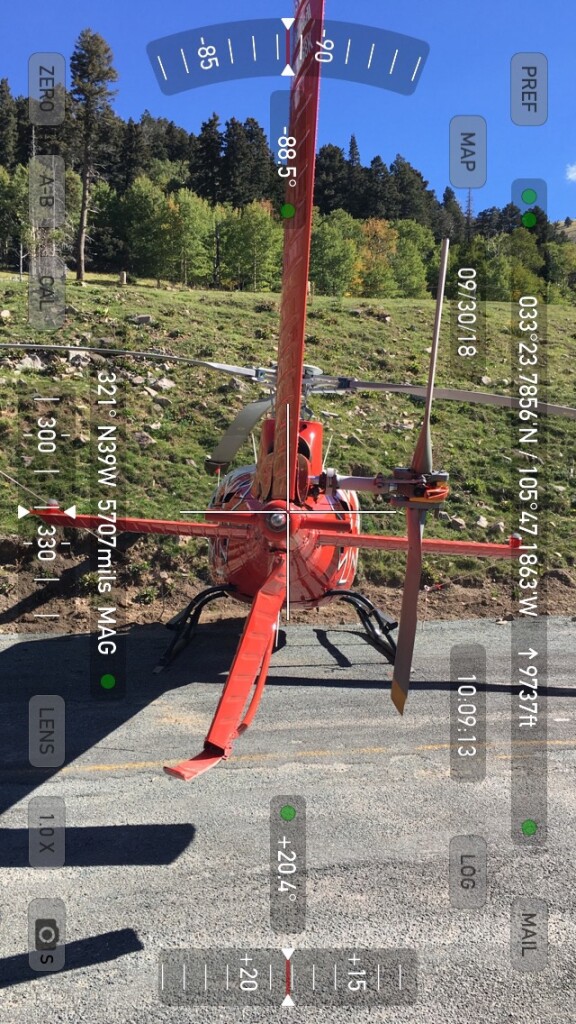
Trans Aero Air Ambulance Airbus AS350B2 N894NA Lower Vertical Stabiliser Damage (Credit: FAA via NTSB)
The helicopter was recovered by road.
NTSB Safety Investigation
The pilot reported that, during his preflight preparation, he did not calculate the hover-in-ground-effect value, the hover out-of-ground-effect value, or the density altitude for the designated landing site.
However, it appears that at that time the crew were expecting to collect the patient from Sierra Blanca Regional Airport, so any pre-flight performance calculations would have needed to be repeated. If the calculations had been done it would have highlighted a performance shortfall. At the time of the accident, the density altitude for the landing site was calculated by the FAA as over 12,000 ft.
The pilot did calculate the fuel needed for the sector there and then to El Paso, Texas, and confirmed that with the estimated patient weight that the aircraft would remain within gross weight.
He added that the accident flight was his second flight in a high-altitude, mountainous environment and that most of his flight hours were accumulated at sea level [note: mostly offshore flying].
Procedures had been in place for air ambulance operations at Ski Apache since February 2016. The FAA reported that the pilot…
…was not aware nor briefed of the procedures for landing in the designated helicopter landing zone [nor] aware of the zipline wire obstacles near the landing zone.
It’s not clear if the resort’s procedures had been shared with any air ambulance operators or if any helicopter operators were involved in their development. As a ski resort is a likely location for occasional injuries requiring air ambulance support one might have expected Trans Aero MedEvac would have surveyed the landing site and the associated data would be readily available to the crew.
The more experience of the medical personnel on board commented to NTSB that:
He felt crew resource management [CRM] skills and procedures were lacking, prior to and during the accident flight. He believed that there should be a more formal safety brief prior to takeoff that covered flight plans, aircraft performance, potential hazards and the pre-landing process. He felt that the operation’s aviation safety is self-directed and lacking when it comes to base and company culture assimilation.
NTSB Probable Cause
The pilot’s failure to maintain the proper descent rate during landing.
Contributing to the accident were the pilot’s failure to conduct preflight performance calculations, which resulted in his operating the helicopter in high-density altitude conditions, and his lack of experience in high-altitude, mountainous flying.
Our Observations on the NTSB Investigation and the ‘Mystery of the Missing Flight Data and Risk Analysis’
As this was a non-fatal accident the depth of investigation and thus the overt safety learning in the actual NTSB final report is disappointingly limited. Its noticeable too that the NTSB have focused purely on the relatively obvious aircraft performance aspect and ignored the wider crew selection, training, task planning and landing site issues.
As we noted above, its disappointing that the NTSB don’t seem to have even viewed the publicly available video of the accident. However, what is really odd is there is no mention of the any flight data being analysed. Readers will realise that an AS350B2 has relatively little recorded data, although data can usually be extracted from GPS units for example if investigators are minded to make an effort. However, the FAA changed Part 135 in 2017 so that helicopter air ambulance operators had to comply with the Flight Data Monitoring (FDM) System requirement of FAR 135.607:
After April 23, 2018, no person may operate a helicopter in air ambulance operations unless it is equipped with an approved flight data monitoring system capable of recording flight performance data. This system must:
(a) Receive electrical power from the bus that provides the maximum reliability for operation without jeopardizing service to essential or emergency loads, and
(b) Be operated from the application of electrical power before takeoff until the removal of electrical power after termination of flight.
FAA AC 135-14B Helicopter Air Ambulance (HAA) Operations explains that:
The FDMS should record digital or analog raw data, images, cockpit voice or ambient audio recordings or any combinations thereof which ideally yield at least the following flight information: • Location; • Altitude; • Heading; • Speeds (airspeed and groundspeed); • Pitch, yaw, and roll attitudes and rate of change; • Engine parameters; • Main rotor RPM; • Ambient acoustic data; • Radio ambient audio; and • Any other parameter the operator deems necessary (e.g., high definition video recording looking forward including instrument panel and forward cockpit windshield view, intercommunications system (intercom) between pilot and medical crew, communications with air traffic control (ATC), OCS, base operations, first responders at scene, hospital, etc.)
So this Trans Aero MedEvac helicopter should have been fitted with a suitable FDM System and the NTSB could have downloaded and analysed the data. The reason the NTSB did not do so is not explained.
There is also no mention of any pre-flight risk analysis, another FAR135 helicopter air ambulance requirement (FAR 135.617), although when these are discussed in NTSB reports they usually appear to be crude and uncalibrated tools that don’t take account of major relevant hazards. In fact, FAR135.617 require does analysis of:
- Flight considerations, to include obstacles and terrain along the planned route of flight, landing zone conditions, and fuel requirements
- Human factors, such as crew fatigue, life events, and other stressors
- Weather, including departure, en route, destination, and forecasted
- A procedure for determining whether another helicopter air ambulance operator has refused or rejected a flight request
- Strategies and procedures for mitigating identified risks, including procedures for obtaining and documenting approval of the certificate holder’s management personnel to release a flight when a risk exceeds a level predetermined by the certificate holder
FAA AC 135-14B Helicopter Air Ambulance (HAA) Operations explains the first item should cover (our emphasis added)…
…performance, fuel required, resulting useful load, environmental factors and their effect on performance with all engines operating and, as applicable, with one engine inoperative as well as obstacles and terrain along the planned route of flight and LZ conditions. In-flight changes to routes or destinations do not necessarily require a full risk analysis, provided these options or contingencies were considered in the original risk analysis of the flight operation that was conducted prior to the flight operation was initiated. The original risk analysis should be updated, considering factors which have changed, such as: fuel required, fatigue, airworthiness, and dynamic weather conditions, etc.
Safety Actions
The operator told the NTSB:
Trans Aero believes that the aircraft was at to high of weight for operations at that altitude. We have changed our policy and will not operate AS35082 in a medical configuration above 6,000′ MSL. We have also required pilots to check and note the IGE and OGE performance of the aircraft prior to departure.
Safety Resources
The European Safety Promotion Network Rotorcraft (ESPN-R) has a helicopter safety discussion group on LinkedIn.
See also ESPN-R / EHEST Leaflet HE7: Techniques for Helicopter Operations in Hilly and Mountainous Terrain
ESPN-R also has published this wire strike video and guidance with EASA:
Guidance on “Welcoming Helicopters” at emergency sites (in English and French).
You may also find these Aerossurance articles of interest:
- Beware Last Minute Changes in Plan
- Grand Canyon Air Tour Tragic Tailwind Landing Accident
- NTSB on LA A109S Rooftop Hospital Helipad Landing Accident
- A Short Flight to Disaster: A109 Mountain CFIT in Marginal Weather
- US Fatal Night HEMS Accident: Self-Induced Pressure & Inadequate Oversight
- HEMS A109S Night Loss of Control Inflight (N91NM)
- Air Ambulance A109S Spatial Disorientation in Night IMC (N11NM)
- Dim, Negative Transfer Double Flameout
- US HEMS EC135P1 Dual Engine Failure: 7 July 2018
- Misassembled Anti-Torque Pedals Cause EC135 Accident.
- Taiwan NASC UH-60M Night Medevac Helicopter Take Off Accident
- SAR Helicopter Loss of Control at Night: ATSB Report
- Fatal Fatigue: US Night Air Ambulance Helicopter LOC-I Accident
- Deadly Dusk Air Ambulance Bird Strike
- NTSB Investigation into AW139 Bahamas Night Take Off Accident
- HEMS Black Hole Accident: “Organisational, Regulatory and Oversight Deficiencies”
- HEMS S-76C Night Approach LOC-I Incident
- Life Flight 6 – US HEMS Post Accident Review
- US HEMS “Delays & Oversight Challenges” – IG Report
- US HEMS Accident Rates 2006-2015
- More US Night HEMS Accidents
- Fatal Night-time UK AW139 Accident Highlights Business Aviation Safety Lessons
- Sécurité Civile EC145 Mountain Rescue Blade Strike
- Hanging on the Telephone… HEMS Wirestrike
- Air Ambulance Helicopter Downed by Fencing FOD
- Ambulance / Air Ambulance Collision
- Hawaiian Air Tour EC130T2 Hard Landing after Power Loss (Part 1)
- Hawaiian Air Tour EC130T2 Hard Landing after Power Loss (Part 2 – Survivability)
- CFIT Gangnam Style – Korean S-76C++ and Decision Making
- Sécurité Civile EC145 SAR Wirestrike
- Firefighting Helicopter Wire Strike
- Helicopter Wirestrike During Powerline Inspection
- Fatal MD600 Collision With Powerline During Construction
- Fatal Wire Strike on Take Off from Communications Site
- Fatal Wisconsin Wire Strike When Robinson R44 Repositions to Refuel
- Impromptu Landing – Unseen Cable
- That Others May Live – Inadvertent IMC & The Value of Flight Data Monitoring
- UPDATE 29 January 2021: BK117 Impacts Sea, Scud Running off PNG
- UPDATE 31 January 2021: Fatal US Helicopter Air Ambulance Accident: One Engine was Failing but Serviceable Engine Shutdown
- UPDATE 5 March 2021: Wire Strike on Unfamiliar Approach Direction to a Familiar Site
- UPDATE 13 March 2021: S-76A++ Rotor Brake Fire
- UPDATE 21 May 2021: Firefighting AW139 Loss of Control and Tree Impact
- UPDATE 29 May 2021: Air Ambulance B407 Hospital Helipad Deck Edge Tail Strike During Shallow Approach
- UPDATE 31 July 2021: Low Recce of HEMS Landing Site Skipped – Rotor Blade Strikes Cable Cutter at Small, Sloped Site
- UPDATE 21 August 2021: Air Methods AS350B3 Night CFIT in Snow
- UPDATE 19 September 2021: A HEMS Helicopter Had a Lucky Escape During a NVIS Approach to its Home Base
- UPDATE 23 December 2021: Air Methods AS350B3 Air Ambulance Tucson Tail Strike
- UPDATE 14 August 2022: Second Time Unlucky: Fatal Greek Wirestrike High-Wire Illusion
We have discussed human factors and error management more generally here:
- Professor James Reason’s 12 Principles of Error Management
- Back to the Future: Error Management
- Also see our review of The Field Guide to Understanding Human Error by Sidney Dekker presented to the Royal Aeronautical Society (RAeS): The Field Guide to Understanding Human Error – A Review
A public inquiry chaired by Anthony Hidden QC investigated 1988 Clapham Junction rail accident. In the report of the investigation, known as the Hidden report, he commented:
There is almost no human action or decision that cannot be made to look flawed and less sensible in the misleading light of hindsight. It is essential that the critic should keep himself constantly aware of that fact.

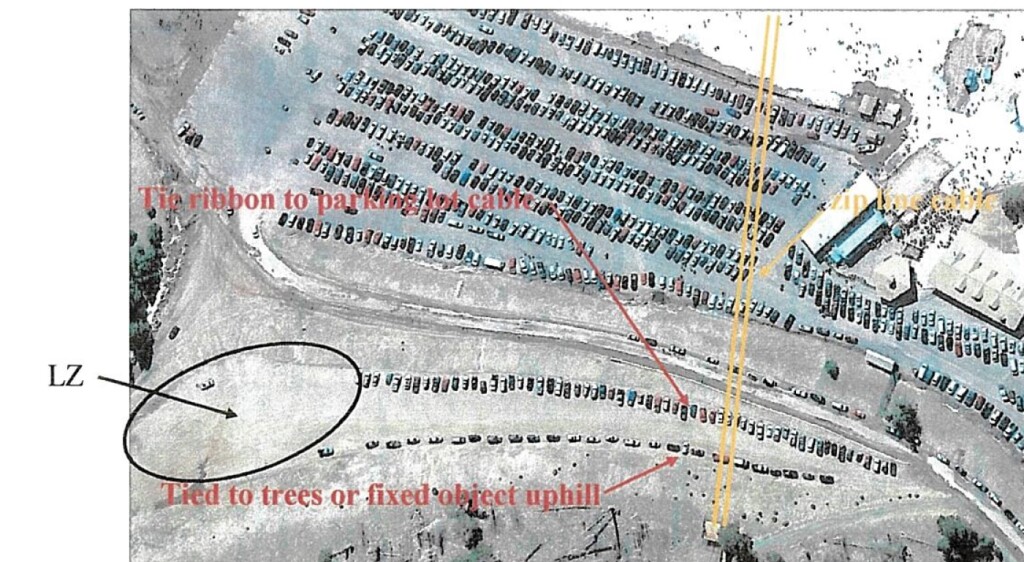
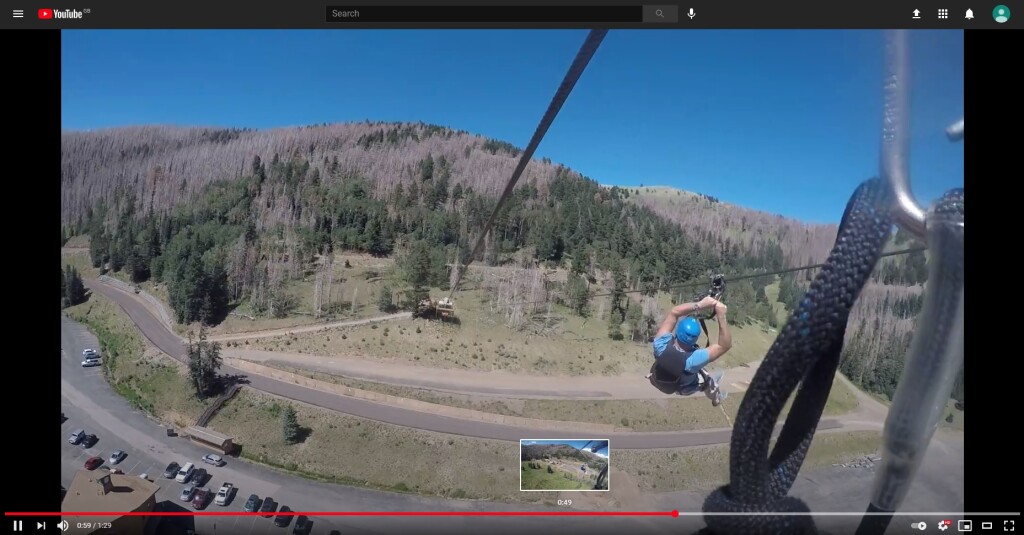
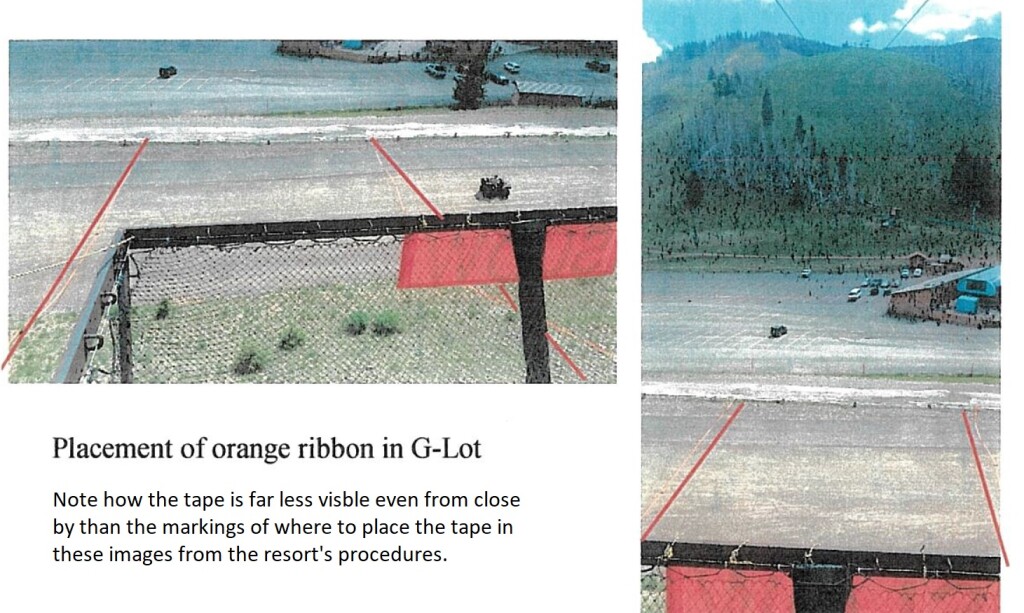
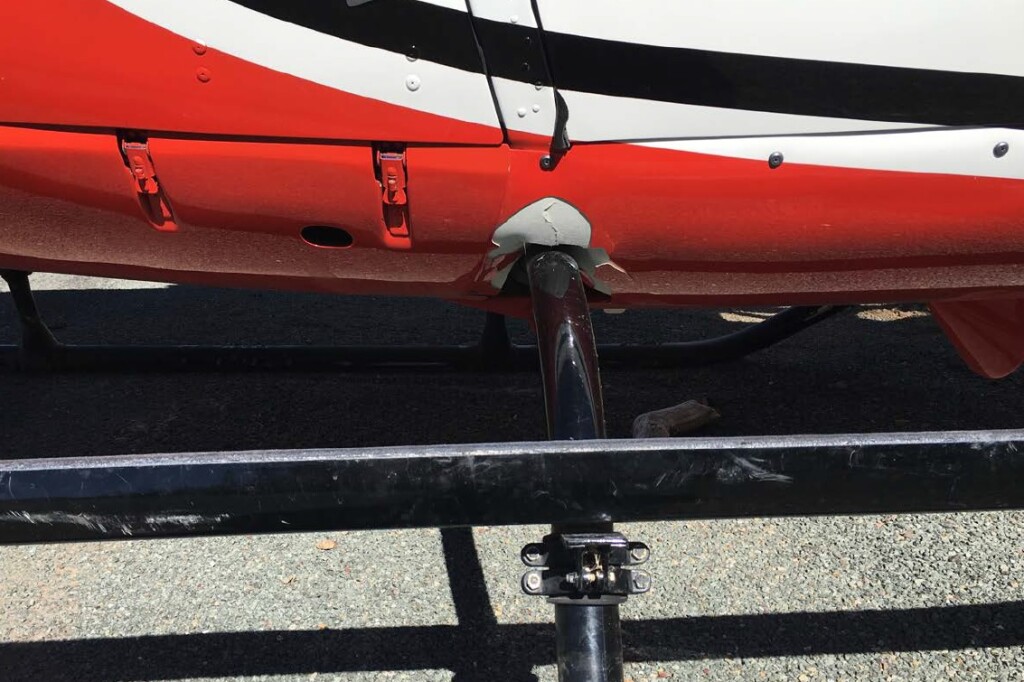
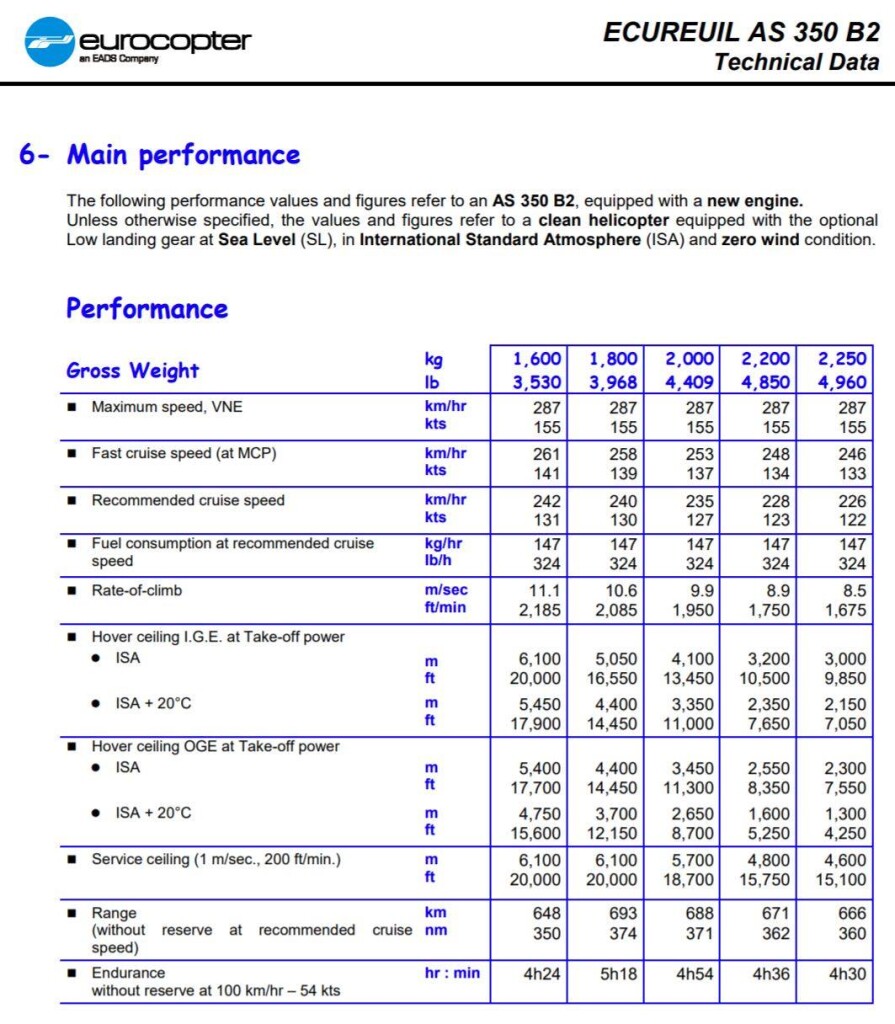
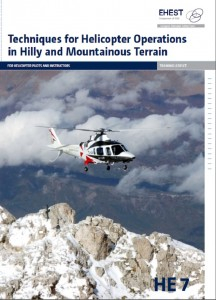
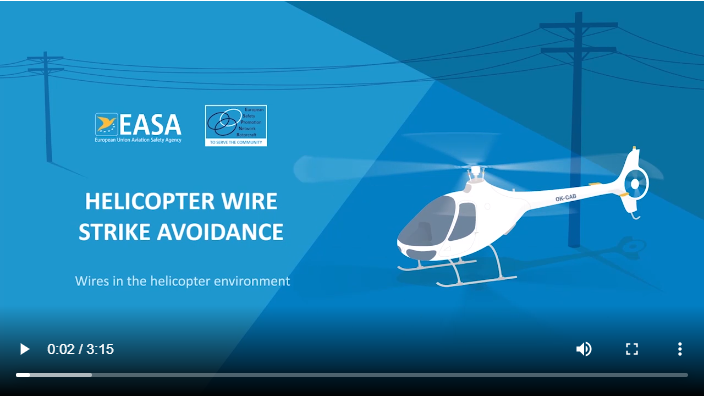
Recent Comments